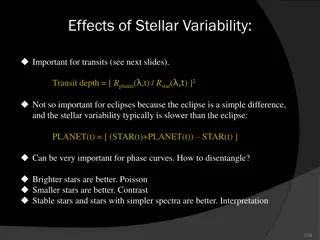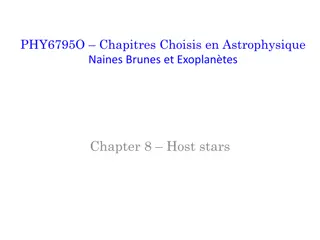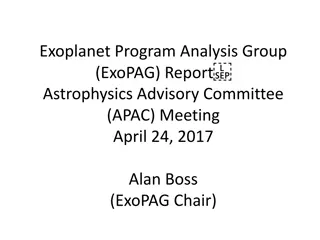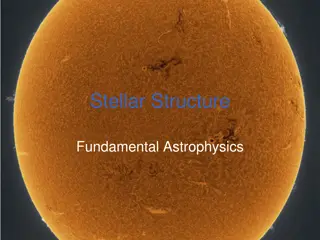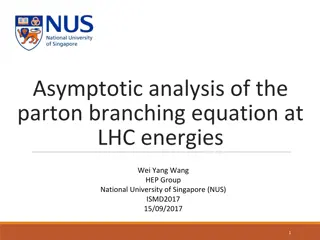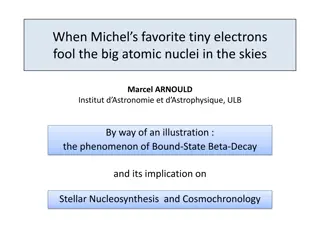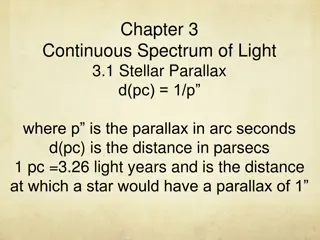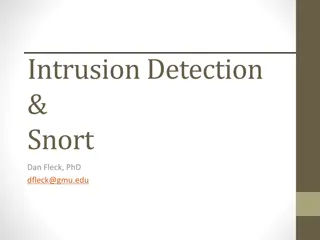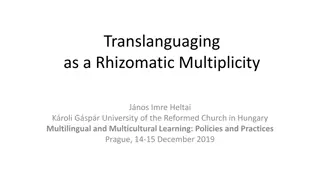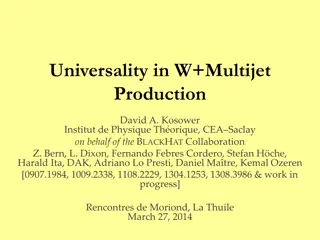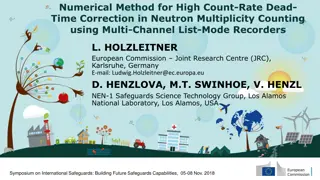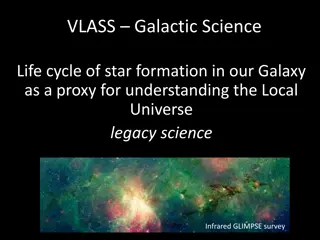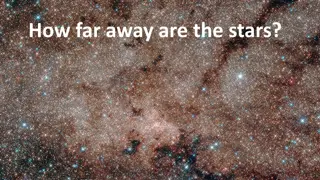Unveiling the Impact of Stellar Multiplicity on Exoplanet Detection
Exploring the effects of stellar multiplicity on exoplanet detection, this research highlights the challenges in accurately measuring Earth-sized planets and proposes high-resolution imaging as a solution. By conducting a survey of Kepler non-host stars, significant insights have been gained, suggesting potential implications for planet formation and stability in multi-star systems.
Download Presentation

Please find below an Image/Link to download the presentation.
The content on the website is provided AS IS for your information and personal use only. It may not be sold, licensed, or shared on other websites without obtaining consent from the author. Download presentation by click this link. If you encounter any issues during the download, it is possible that the publisher has removed the file from their server.
E N D
Presentation Transcript
The Last Tall Tent Pole: Measuring the Multiplicity of Kepler Stars #knowthystar, October 10 2017 Jessie Christiansen (with David Ciardi, Courtney Dressing) Caltech/IPAC-NExScI
What about What about magnetic fields? magnetic fields? stellar multiplicity?
Why do we care about stellar multiplicity? Only 56% of nearby (<25pc) solar- type stars are single (Raghavan+2010) The Kepler Input Catalog (KIC; Brown+2011) assumed that unresolved flux sources (typically 1-2 resolution) were single stars The most recent Kepler stellar properties catalogue (Mathur+2017) still uses KIC values for 73% of stars Revelio! 3
Impact on occurrence rates 1. We do not measure the right number of Earth-size planets! (Ciardi+2015)
High-resolution imaging to the rescue! Furlan+2017 (see Elise s talk tomorrow!) compile high- resolution imaging of 3183 Kepler planet candidate host stars They observe a lower limit of 30% of planet candidates having companions within one Kepler pixel (4 ) Furlan+17
Impact on occurrence rates 2. We do not measure the right detection limits on the non-host stars! SNR= ?? ?
Dont we have the answer? Why can t we apply the multiplicity rates for the planet candidate hosts to the non-hosts? Fischer & Valenti 2005 Well-known examples in the literature of differences in stellar properties of exoplanet hosts and non-hosts Also evidence that stellar multiplicity could suppress some kinds of planet formation (Wang et al. 2014a,b) or lead to high rates of ejection of formed planets (Kaib et al. 2013). Wang+2014
So what *is* the answer? Perform a high- resolution survey of Kepler non-host stars with Palomar and Keck Using the Mathur+17 stellar properties, 2135 targets where rocky, temperature planets would be detectable Randomly draw 200 targets to form a control sample Preliminary results 40% multiples!
Conclusions Robust occurrence rates need to account for stellar multiplicity, otherwise you get - The planets wrong - The planet hosts wrong - The non-planet hosts wrong This will be an even larger problem for TESS (which is not a statistical mission but we would be remiss not to try!)


